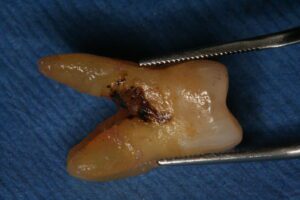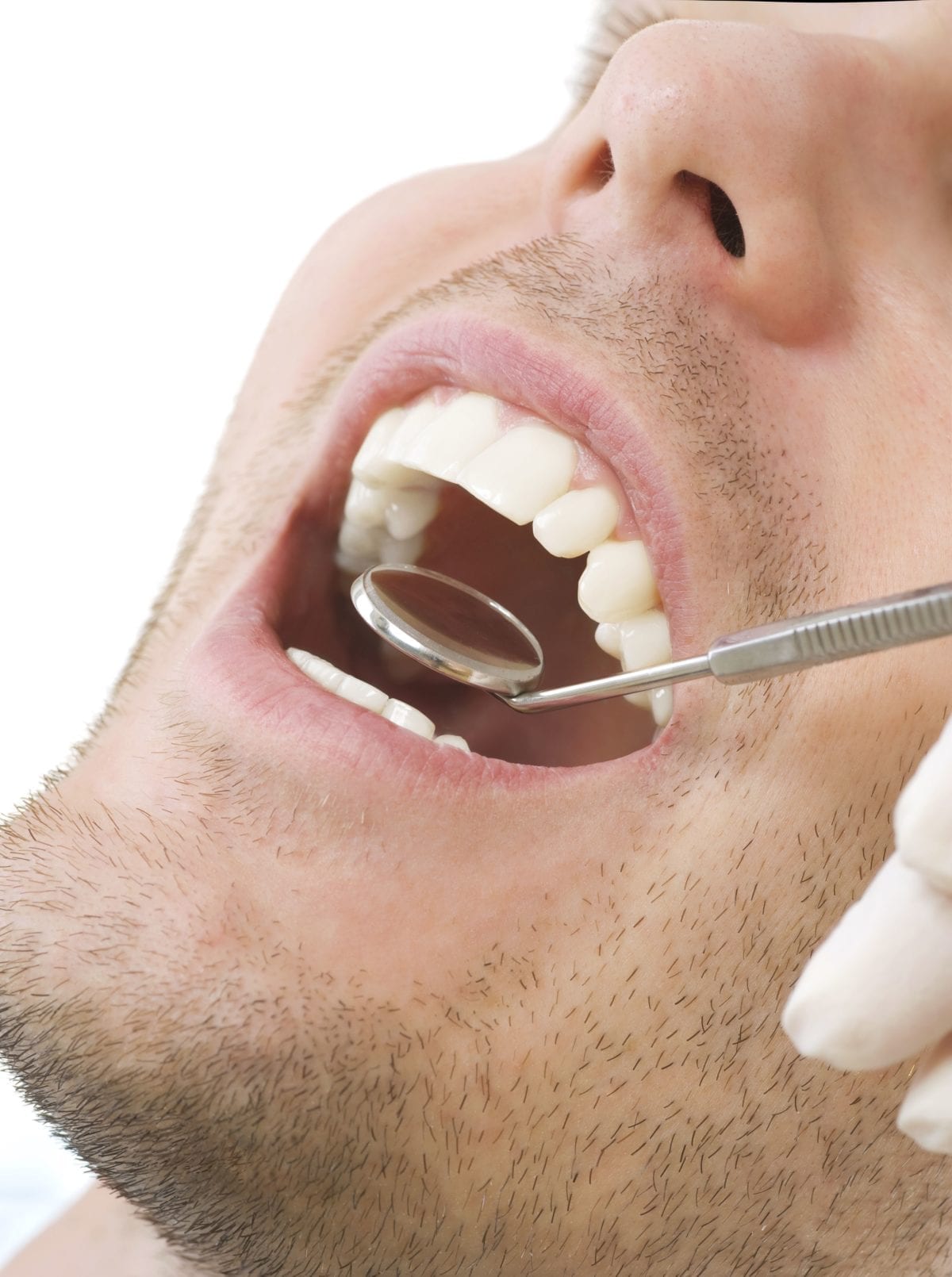
 Your periodontist has probably spoken to you in the past about the risks of dental plaque, the accumulation of bacteria, and food debris that forms on your teeth. A term you may not have heard of is dental calculus, commonly referred to as tartar. Dental calculus can pose a critical threat to your oral health and hygiene, but the good news is that there are some basic steps you can take to prevent its formation.
Your periodontist has probably spoken to you in the past about the risks of dental plaque, the accumulation of bacteria, and food debris that forms on your teeth. A term you may not have heard of is dental calculus, commonly referred to as tartar. Dental calculus can pose a critical threat to your oral health and hygiene, but the good news is that there are some basic steps you can take to prevent its formation.
What is Dental Calculus?
When we refer to dental calculus, exactly what are we talking about? Calculus is bacterial plaque that has accumulated on a specific area of your tooth, absorbing minerals from your food and saliva that eventually becomes a hard deposit almost bonded to the tooth. Dental calculus clings strongly onto the tooth, similar to how barnacles form and cling to a ship.
There are two basic types of dental calculus that patients should know about: supragingival and subgingival. The difference mostly has to do with the location of the calculus relative to the gumline.
- With supragingival calculus, the build-up remains above the gumline and is often visible and easily removed during regular dental cleaning.
- With subgingival calculus, however, the build-up extends beneath the gumline, where it is entirely unseen and can be difficult to remove as a result.
How Does Dental Calculus Form?
Dental calculus is a result of accumulated bacterial plaque.
Bacterial plaque forms on all surfaces of a tooth that is exposed to saliva, but it can easily be removed with brushing and flossing. Within the plaque, colonies of bacteria form a sticky biofilm, that absorbs nutrients and minerals from the food you eat as well as from your saliva. When the plaque is not effectively removed with daily brushing and flossing, it begins to harden and cling tighter onto the tooth. The hardened surface quickly becomes coated with more biofilm and plaque, and begins to enlarge.
The longer the calculus remains, the more species of bacteria live on it, and some can be so irritating to the gum tissue that they begin to become inflamed. The longer this process continues, the more advanced the inflammation becomes. Gum tissue can begin to swell, become tender and red, and often bleeds easily. This process is referred to as gingivitis and is usually reversible with a thorough professional dental cleaning.
Why is Dental Calculus Bad?
What exactly makes dental calculus so dangerous?
The presence of dental calculus is an indication that bacterial plaque has been accumulating in the same position for several days or weeks. When gingivitis develops as a result, it is the body’s way of letting us know something is not right. If left untreated, this inflammation causes the gum tissue to weaken and pull away from the tooth itself, causing a pocket to form. Then the newly formed pocket becomes filled with plaque, which forms into calculus, and the process continues until it has extended deep under the gum tissue. When the gums become so inflamed for a long period of time and begin forming pockets, it turns into a form of gum disease called “periodontitis.”
 This is what dental calculus looks like on a tooth root.
This is what dental calculus looks like on a tooth root.
It is important to understand that periodontitis is not an infection of the gums. Instead, it is the body’s natural reaction to prolonged bacterial build-up on the tooth surface. Periodontitis is the result of chronic inflammation of the gum around the teeth. The longer the inflammation continues, the more destruction it causes, including deterioration of the actual bone around the teeth. It might be surprising to learn that this process can continue for several months and even years, undetected. This is because there is often little or no pain while this is occurring, and the only indication that anything is wrong might be a little bleeding when you are cleaning your teeth.
How Do You Prevent Dental Calculus?
The best remedy for dental calculus is to prevent it from forming in the first place. This means keeping your teeth free of any plaque build-up. A good oral care routine can go a long way. Specifically, patients should brush their teeth at least twice daily and floss at least once daily. Antimicrobial mouthwashes can also help minimize or slow down the build-up of plaque and calculus. There are many tools available that claim to remove plaque, but the most simple and effective techniques are effective brushing and flossing. Of course, it is also important to see your dentist or periodontist on a regular basis.
For patients who have never had periodontitis, regular cleanings every six months by a dental hygienist are usually sufficient to remove any plaque you may be missing during your home care routine. However, if you have difficulty effectively removing the plaque before it turns into calculus, you may benefit from more frequent cleanings in order to prevent the formation of pockets and bone loss. Additionally, regular appointments give your periodontist the chance to inspect your teeth and gums and to identify any early warning signs of calculus or of gum disease.
What is the Best Way to Remove Dental Calculus?
For patients with existing dental calculus, professional cleaning is needed to completely remove all the build-up. If calculus has developed below the gum line, the area may need to be numbed, and advanced techniques may be required to effectively remove the calculus and bacterial plaque. This procedure is called “scaling and root planning.” If bone loss is present along with deep pocketing, additional procedures, including surgical procedures, may be needed to effectively remove all the calculus.
Take Precautions Against Dental Calculus
Dental calculus typically forms as a result of ineffective home care techniques and possibly waiting too long between dental visits, or even avoiding them altogether. As you can see, avoiding dental exams and cleanings can lead to a host of complications. The good news is that all of this can be averted!
To learn more about preventing calculus build-up or to schedule a checkup for your teeth and gums, we welcome you to contact Dr. Tina Beck-Mayo at Southern California Periodontics & Implantology in San Diego, CA.








